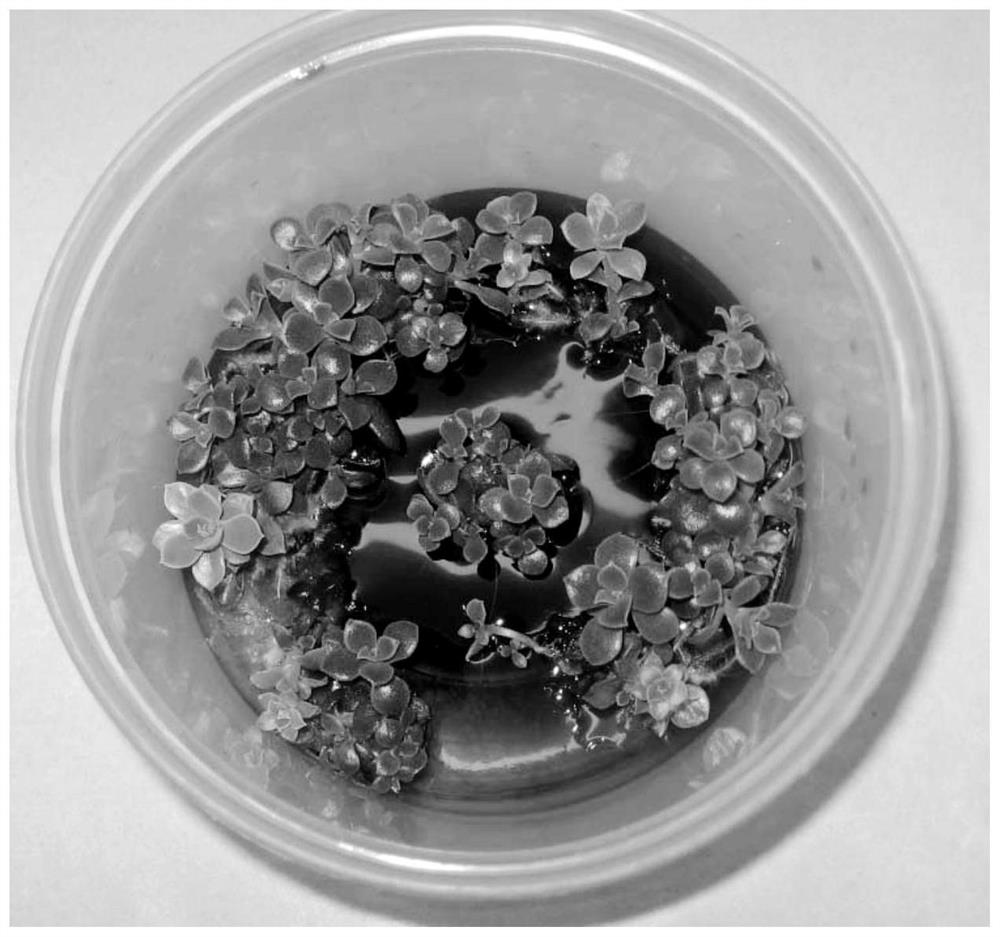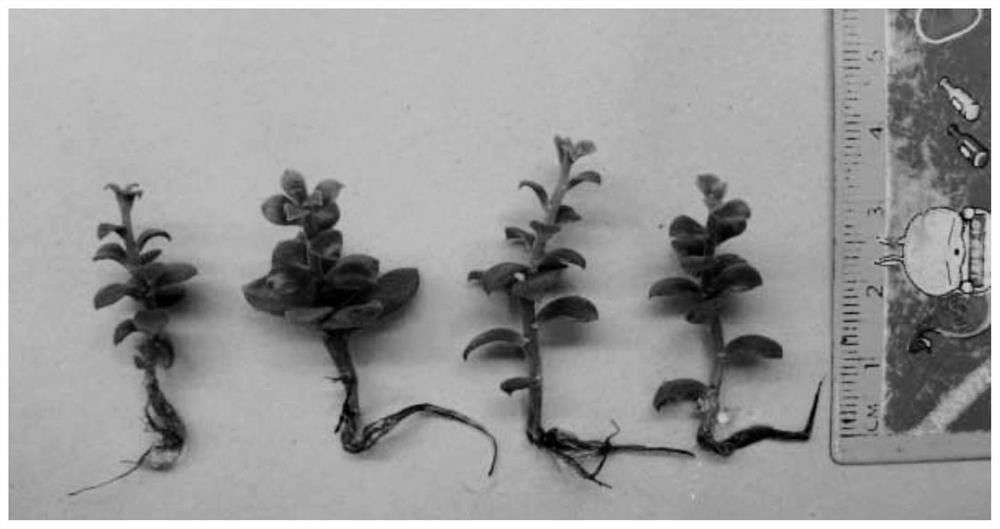Tissue culture technique of Seven Lucky Gods
A tissue culture and process technology, applied in the field of Qifushen tissue culture process, can solve the problems of growth cycle, survival rate limitation, unfavorable production, etc., and achieve the effect of moderate number of leaves, good growth and strong root system.
- Summary
- Abstract
- Description
- Claims
- Application Information
AI Technical Summary
Problems solved by technology
Method used
Image
Examples
Embodiment 1
[0043] The tissue culture technique of the Seven Lucky Gods comprises the following steps:
[0044]1) mother plant pretreatment: select the female parent whose color is light pink green, leaf ovate, thicker, blunt leaf end, disease-free, worm-free, stop watering 7 days before seed production, make the substrate dry, The whole potted plant is slightly wilted;
[0045] After drying, the 10mm-thick soil layer below the surface of the substrate is dried uniformly, and it becomes loose sand when pinched by hand, and it is not sticky;
[0046] 2) Explant treatment: cutting terminal buds from the female parent, and obtaining explants after disinfection;
[0047] Disinfection treatment is as follows: rinse the excised tissue in 0.5‰ washing powder solution for 10 minutes, then rinse with water for 3 times; then rinse with 1‰ HgCl 2 The solution was soaked and disinfected for 10 minutes, and then soaked and cleaned with sterile water 5 times, each time for 4 minutes; then the discolo...
Embodiment 2
[0062] The difference between embodiment 2 and embodiment 1 is that step 2) is different, and step 2 of embodiment 2) is:
[0063] 2) Explant treatment: cutting young and tender leaves from the female parent, and obtaining explants after disinfection;
[0064] Disinfection treatment is as follows: rinse the excised tissue in 0.5‰ washing powder solution for 5 minutes, then rinse twice with water; then rinse with 1‰ HgCl 2 The solution was soaked and disinfected for 8 minutes, and then soaked and washed with sterile water for 3 times, each time for 3 minutes; then the discolored part of the tissue section was excised.
Embodiment 3
[0066] The difference between embodiment 3 and embodiment 1 is that step 2) is different, and step 2 of embodiment 2) is:
[0067] 2) Explant treatment: cutting old leaves from the female parent, and obtaining explants after disinfection;
[0068] Disinfection treatment is as follows: rinse the excised tissue in 0.5‰ washing powder solution for 10 minutes, then rinse with water for 3 times; then rinse with 1‰ HgCl 2 The solution was soaked and disinfected for 9 minutes, and then soaked and washed with sterile water for 4 times, each time for 5 minutes; then the discolored part of the tissue section was excised.
PUM
 Login to View More
Login to View More Abstract
Description
Claims
Application Information
 Login to View More
Login to View More - R&D
- Intellectual Property
- Life Sciences
- Materials
- Tech Scout
- Unparalleled Data Quality
- Higher Quality Content
- 60% Fewer Hallucinations
Browse by: Latest US Patents, China's latest patents, Technical Efficacy Thesaurus, Application Domain, Technology Topic, Popular Technical Reports.
© 2025 PatSnap. All rights reserved.Legal|Privacy policy|Modern Slavery Act Transparency Statement|Sitemap|About US| Contact US: help@patsnap.com



